Rachel Manija Brown's Blog, page 14
April 25, 2024
Ascension, by Nicholas Binge
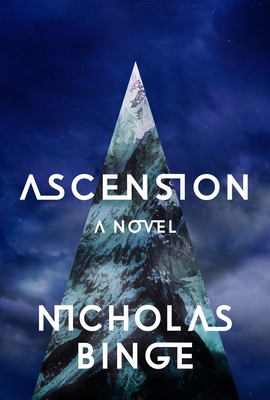
This pleasing novel about a doomed expedition to a bizarre mountain - Annihilation meets "Who Goes There"/The Thing - involves a number of my favorite tropes: survival, doomed expeditions, strange locations, non-Euclidian geometry, time weirdness, and the epistolatory form, complete with a frame story.
Despite its modern setting, it feels like a pulp adventure/horror/science fiction paperback from 1950, but with modern technology. I love pulp. It would be hard to screw this up to an extent that I wouldn't enjoy it, and I did enjoy it. It's not a great novel and the story is kind of ridiculous, but in an enjoyable way. It's a fun, engrossing read that provides everything you want from that premise. If you like those tropes, you will enjoy it too.
The protagonist is Harold Tunmore, physicist/medical doctor/explorer/rocket scientist/rock star. The framing device is a note by his brother Ben, explaining how Harold went missing after sending three extremely weird letters to Ben's fourteen-year-old daughter, Harriet. (WTF is going on here weird, not inappropriate weird.) He then disappeared for thirty years and was presumed dead, then reappeared in a mental hospital with a bundle of never-sent letters to Harriet. The bulk of the novel consists of those letters, which are the diary of the doomed expedition.
(Annoyingly, Harriet drops completely out of the narrative upon receiving the letters, even when it would make sense for her to be at least mentioned. She's basically just a "dear diary.")
Harold is contacted by mysterious agents and persuaded to go on a mysterious expedition when they tell him that there were only two survivors of the previous attempt (the other eight never returned), both dramatically fucked up by the experience, and one is his ex-wife Naoko, doctor and "the best field medic in the world." The other survivor appears to be precognitive and dies shortly after his return. Naoko is obsessed with time-keeping and mostly incoherent.
The expedition is to climb a mountain that is taller than Mount Everest and has suddenly appeared in the middle of the ocean. (No idea how the entire world hasn't noticed this.)
A team is assembled, consisting of three redshirt soldiers, an egomaniac mountaineer, two military contractors, Harold, a world-famous Russian biologist, an atheist chemist, a religious geologist, a weird anthropologist, and the raving mad Naoko. They have a brief window in which to climb the mountain before a giant storm will hit. This will definitely go well!
Like I said, if you like this sort of thing, it's a good example of it. (Annihilation is a great example of it.) Despite some lofty goals about God and free will and stuff, its heart clearly lies in its pulp origins, and more power to it. But I have to share one moment which is probably the most hilariously stupid thing I'll read all year, especially in the context of a book whose epigraph is from "The Myth of Sisyphus."
( Read more... )
Content notes: Tragic child death backstory. Action-style violence.
 comments
comments
Published on April 25, 2024 14:13
April 24, 2024
Small Game, by Blair Braverman
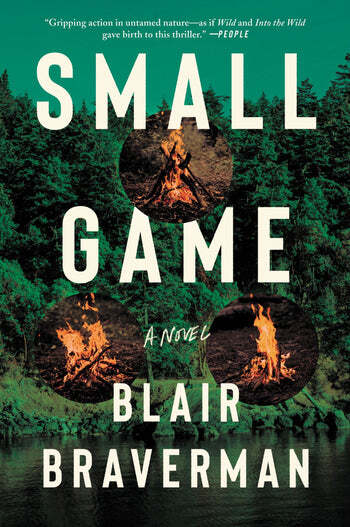
A novel by an... I'll just copy Wikipedia here, because I can't improve on it... American adventurer, dogsled racer, musher, advice columnist and nonfiction writer. She raced and completed the 2019 Iditarod, the 1,000 mi (1,600 km) dogsled race from Anchorage to Nome, Alaska. Publishers Weekly called Braverman a "21st century feminist reincarnation of Jack London."
Relevantly for this book, she appeared on the survival reality show Naked and Afraid.
Small Game is about the four contestants of a reality survivor show, Civilization, who get stranded when the crew disappears without explanation.
(Spoiler for whether or not we learn why - I got accidentally spoiled for this, and I think it's better to know up-front: ( Read more... ))
Mara, the main character, was raised by paranoid survivalists and got a job teaching survival to techbros and other bros, as it's the only thing she knows. In addition to having extremely limited social experience, she's probably autistic, or at least I read her that way. She applies for the show because she's in a bad relationship and needs money to escape. Her voice and way of seeing things is very striking; while her emotional and personal horizons expand a lot during the novel, she stays her essential self.
Small Game is notable partly for what doesn't happen: it's not Lord of the Flies. The survivors don't turn on each other, and there's no rape. (In fact, the sexual danger vanishes when the crew leaves, as that removes the power dynamics based on financial control and exploitation.) There's social awkwardness, and interpersonal blowups, and emotional breakdowns, and tragedy. But there's also kindness and community and mutual support.
It's an unusually realistic take on wilderness survival, in that even supposed experts are going to really struggle to get enough calories, and weakness from hunger quickly makes even small tasks incredibly difficult. There's a lot of interesting thoughts on what survival means.
The ending is very abrupt and I'd have been pissed off if I hadn't been spoiled for the thing I spoiler-tagged, but I did like the last paragraph.
I enjoyed this a lot and recommend it, especially if you're interested in survival. Also it has a central F/F relationship that runs the gamut from sweet to unsettling to unhealthy to heartbreaking to heartwarming, with everything in between.
Content notes: Creepy sexual power dynamics involving the crew and producers; off-page power-related dubcon; an upsetting, kind of unintentional animal harm incident; lots of nature red in tooth and claw; gruesome injuries; spoiler ( Read more... )
You can tell from this that this is a book that really goes for complication, fucked-up characters, and not making anything black-and-white. That's another thing I liked about it.
 comments
comments
Published on April 24, 2024 11:11
April 16, 2024
Wilding: Returning Nature to Our Farm, by Isabella Tree
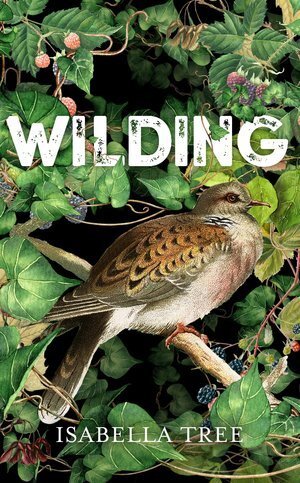
The aptly named Isabella Tree's husband inherited a large farming estate (3500 acres) in Sussex. They spent seventeen years trying to make it profitable, but failed due to multiple circumstances, one of which is that it's hard to farm in Sussex.
The old Sussex dialect has over thirty words for mud. There's clodgy for a muddy field path after heavy rain; gawm – sticky, foul smelling mud; gubber - black mud of rotting organic matter; ike – a muddy mess; pug – sticky yellow Wealdon clay; slab – the thickest type of mud; sleech – mud or river sediment used for manure; slob or slub – thick mud; slough – a muddy hole; stodge – thick puddingy mud.
But luckily, at the time they realized that they'd given it all they had and it just wasn't going to work, the UK had instituted a program that paid farmers to re-wild their land. They promptly rewilded their 3500 acres, creating Knepp Wildland, the first large-scale lowland rewilding project in England.
Tree's account starts out with an avalanche of mostly-depressing statistics about the loss of nature in Britain, broken up by the occasional bit of charming prose like her mud list above. As she dives into describing the process and theory of their rewilding project, it gets less and less dry and more and more glorious, like this description of the mating frenzy of purple emperor butterflies, first sublime:
The sound of a single butterfly is imperceptible. But tens of thousands have a breath of their own, like the backdraft of a waterfall or an accumulating weather front. It feels as though the oscillating susurration of their wingbeats, pounding away on their supernatural wavelength, might dissolve the world into atoms.
And then hilarious:
“Think testosterone,’ says Matthew, ‘multiply it by πr2 and double it. Forget boys locked in boarding schools. They’ve spent ten months as a caterpillar waiting for this. They’ve pupated, they’re mature and they’re desperate. They’re squaddies in the disco on a Saturday night. They’re sailors in port after a nine-month voyage.”
Tree and her husband introduced large native wildlife or wildlife substitutes to mimic the ecology of pre-industrial times - longhorn cattle substituting for aurochs, Tamsworth pigs for wild boar, Exmoor ponies, and roe deer. They broke up the elaborate Victorian system of drains, and discovered that left to its own devices, seasonal wetlands formed and destructive flooding became less common. (Beavers would have managed the water even better, but as of the writing of the book, they did not have permission to introduce native beavers.)
One of the most striking observations is that conventional wisdom on species' habitats and preferences is often based on their observed behavior in radically altered landscapes, and may not reflect their ideal habitats. For instance, if the only natural landscape available to nightengales is dense woodland, they'll nest in dense woodland. But with a wider variety of landscapes, they might actually choose and prefer scrubland.
She visits other rewilding projects, most notably the Oostvaardersplassen Reserve in the Netherlands, and learns how every aspect of a wild ecology is important, from the soil to the fungi to leaving dead animal carcasses to be scavenged (something that is banned in the UK, unfortunately.) But despite opposition from neighbors and endless bureaucracy, the farm transforms into a haven for native plants and animals, attracting many rare and endangered species.
I highly recommend this - at its best, it's nature writing to rank with Gerald Durrell, and it's very thought-provoking and full of new-to-me insights - but be aware that the first couple chapters are the driest, and it gets better as it goes along.
I cannot WAIT for Jeff Vandermeer's rewilding book. Most books I've read on rewilding are either about enormous projects like this one, or not about America, or both. I'm trying to rewild some of my property, which is just under a half-acre, and I'd love advice that's more applicable to someone who does not have native hedgehogs and can't introduce wild ponies.
 comments
comments
Published on April 16, 2024 13:26
April 12, 2024
Only a Monster, by Vanessa Len

Joan, the daughter of an English mother (deceased) and a Malaysian father, learns as a child that her mother's family is unusual. They call themselves monsters, and can do what appears to be genuine magic, if of a minor variety: they can make small objects appear and disappear. Joan can also do this as a child, but the ability fades away as she grows up. By the time she's sixteen, it's gone and she's relegated the whole monster-and-magic thing to the realm of "my eccentric family has weird beliefs."
Needless to say, there's a lot more to it than that.
Only a Monster is a YA fantasy that partakes in some current YA tropes (the love triangle) and does its own thing in other ways. Unusually for a modern YA, the worldbuilding is excellent and original. The monsters have their own society, with families who have different abilities, mostly of a pleasingly eccentric and small-scale variety. Because the powers aren't world-shattering, there's a good amount of figuring out how to use them in clever ways. I LOVE this kind of thing, and it's very well-done.
There's another power that all the monsters have. It's time travel, of a very unique variety and with a real and disturbing cost. I've never come across this exact variant on time travel before, and the worldbuilding around it and the society than grew around people who can do it is also extremely well-done. The plot is mostly very good, with some excellent twists and surprises.
The flaw in the book is that two of the three main characters are not very interesting. This didn't at all ruin the book for me - I enjoyed it a lot - but it's definitely the sort of book where the supporting cast is enormously more interesting than the leads.
Joan is kind of an everygirl figure and she feels more there as a vehicle to tell the story than a three-dimensional character. She often refuses to listen to people trying to tell her information she really needs to know when that serves the plot, but is very clever and quick-witted when that serves the plot.
The other issue is the love triangle. One of the boys accompanies Joan for almost the whole book, and we see their relationship grow from strangers to enemies to friends to could-be-lovers. This really worked for me. The other one is someone she had a crush on before the book starts, we get a tiny bit of very dramatic interaction at the beginning, and then he's off-page for most of the book, but we're told that their love could move worlds, etc. This didn't work for me.
Bizarrely, there is another love story, between supporting characters, in which the characters are almost never in the same place at the same time, and I was REALLY invested in that one. Maybe it worked better because it was pushed less hard? But it was a very difficult technical feat to pull off, and it was executed beautifully.
This book has a satisfying "settled for now" ending, but the story clearly continues. I'll be following it, because I LOVE the world and the supporting cast is great.
 comments
comments
Published on April 12, 2024 10:52
April 10, 2024
The New York Review Children’s Collection
Prompted by this post by osprey-archer.
The New York Review of Books has been releasing lovely editions of children's books - some old classics, some new classics, and some newly translated into English - since the early 2000s. There are books by Rumer Godden and Madhur Jaffrey and Russell Hoban, and many more.
I could not find a single site with a list of all of them. The official site has newer releases, but not all the out of print ones.
This site includes a bunch that are out of print, but doesn't have all the new ones. (Page down for the complete list - the left-hand button allows you to select "show 100 entries," which is all of them.)
The series includes some books I love, some I do not love, and many I've never even heard of.
Books I have read:
The Little Grey Men and its batshit sequel, The Little Grey Men Go Down the Bright Stream, by BB
The Abandoned and Thomasina: The Cat Who Thought She Was A God, Paul Gallico. A pair of stories about intelligent cats and their adventures and travails. Both the main character cats survive, but there is a LOT of animal harm along the way. They're melodramatic and vivid and I loved them both when I was a kid, but The Abandoned more because that one involves a boy who turns into a cat and has great "what it's like to be a cat" scenes.
Bob, Son of Battle, by Alfred Ollivant. ALL the dogs die in a giant dog-on-dog battle!
Charlotte Sometimes, by Penelope Farmer. A dreamlike timeslip story, which I recall being unusually concerned with issues of identity and reality. I should re-read this.
An Episode of Sparrows, by Rumer Godden. An updating of The Secret Garden in which a pair of scrappy London kids find a bit of earth and begin cultivating it. I LOVE this book.
The House of Arden, by E. Nesbit. Fun time-travel story featuring a talking mole.
Loretta Mason Potts, by Mary Chase. Strange, surreal fantasy by the author of Harvey, which is about a man whose best friend is a six-foot invisible rabbit.
The Magic Pudding, by Norman Lindsay. Classic Australian fantasy about a bad-tempered talking pudding, an old sailor, and a wombat. I adored this as a kid, largely for the hilarious illustrations of the angry pudding.
What books have you read from this series? What would you recommend? What would you emphatically not recommend?

 comments
comments
The New York Review of Books has been releasing lovely editions of children's books - some old classics, some new classics, and some newly translated into English - since the early 2000s. There are books by Rumer Godden and Madhur Jaffrey and Russell Hoban, and many more.
I could not find a single site with a list of all of them. The official site has newer releases, but not all the out of print ones.
This site includes a bunch that are out of print, but doesn't have all the new ones. (Page down for the complete list - the left-hand button allows you to select "show 100 entries," which is all of them.)
The series includes some books I love, some I do not love, and many I've never even heard of.
Books I have read:
The Little Grey Men and its batshit sequel, The Little Grey Men Go Down the Bright Stream, by BB
The Abandoned and Thomasina: The Cat Who Thought She Was A God, Paul Gallico. A pair of stories about intelligent cats and their adventures and travails. Both the main character cats survive, but there is a LOT of animal harm along the way. They're melodramatic and vivid and I loved them both when I was a kid, but The Abandoned more because that one involves a boy who turns into a cat and has great "what it's like to be a cat" scenes.
Bob, Son of Battle, by Alfred Ollivant. ALL the dogs die in a giant dog-on-dog battle!
Charlotte Sometimes, by Penelope Farmer. A dreamlike timeslip story, which I recall being unusually concerned with issues of identity and reality. I should re-read this.
An Episode of Sparrows, by Rumer Godden. An updating of The Secret Garden in which a pair of scrappy London kids find a bit of earth and begin cultivating it. I LOVE this book.
The House of Arden, by E. Nesbit. Fun time-travel story featuring a talking mole.
Loretta Mason Potts, by Mary Chase. Strange, surreal fantasy by the author of Harvey, which is about a man whose best friend is a six-foot invisible rabbit.
The Magic Pudding, by Norman Lindsay. Classic Australian fantasy about a bad-tempered talking pudding, an old sailor, and a wombat. I adored this as a kid, largely for the hilarious illustrations of the angry pudding.
What books have you read from this series? What would you recommend? What would you emphatically not recommend?

 comments
comments
Published on April 10, 2024 12:47
April 7, 2024
April 5, 2024
Alien Earth, by Megan Lindholm
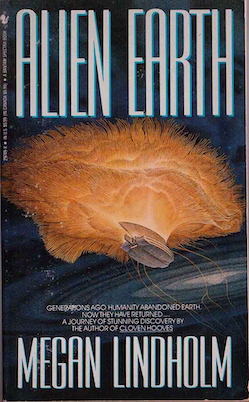
Re-read of Megan Lindholm's (Robin Hobb's) sole science fiction novel. It has two connected plotlines that connect toward the end, and I remembered being way more into one than the other. (A common issue with that sort of plot.) On this re-read, the exact same thing happened. I also was able to identify a weird theme that on previous readings had only made me vaguely uncomfortable.
After humans destroyed the Earth's biosphere to the point that it and they were going to die together, some of the surviving humans were rescued by an alien species, the insectile Arthroplana, who traveled in beastships - enormous, semi-sentient, spacefaring animals, to which the Arthroplana attached some living compartments like barnacles on a whale. The Arthroplana deposited the humans on a spare planet which they were allowed to live on with the condition that they not damage its environment.
During the exodus from Earth, one man, Raef, was disqualified from leaving Earth as he had cancer. But he managed to smuggle himself aboard the beastship Evangeline, who was smarter than the Arthroplana realized. She concealed him within herself, extending his life with long periods of hibernation, during they both participate in a kind of dreamworld mostly based on Raef's memories of childhood and every work of fiction he's ever known. As he's always been very imaginative and given to spinning out pre-sleep fantasies for himself, it takes him a long time to realize that Evangeline is real and not a figment of his imagination - let alone who she really is. When he does figure it out, he also realizes that she's an intelligent being enslaved by the Arthropoda - and specifically by her ship's master, an Arthropoda nicknamed Tug.
This plotline is my favorite. It's got drama, it's got comedy, it's largely composed of dreamlike metafiction, and it has Evangeline first becoming more human and then, as she awakens into her true self, more alien. It's also a beautiful, strange love story culminating in a lovely final page. When I thought back on the book, this was about 90% of what I remembered about it.
There's another story too, which has more pagetime. In the hundreds of years that have passed since Raef boarded Evangeline, the Arthropoda have been genetically and culturally manipulating humans. This part is a weird dystopia based on environmentalism gone mad!
Ostensibly to ensure that humans don't trash the ecology of their new planet (but also so the Arthropoda can more easily enslave and exploit them), they are genetically engineered to delay puberty until well into adulthood, made smaller, fed a strictly vegan diet oh noes, and not allowed to alter the natural environment AT ALL. Every scrap of waste is recycled, every fruit plucked must be compensated for with fertilizer, etc. Also, fiction is banned.
John and Connie, a pair of traumatized-by-evil-environmentalism pre-pubescent adults, ship out aboard the Evangeline to check out the supposedly devastated Earth.
( Read more... )
So, is this worth reading? Well, yes and no. Half of it is pretty great. The other half is a dystopia on the theme of "too much environmentalism is bad actually," which I rolled my eyes as that's not REMOTELY an actual problem in the real world, so it lacks the resonance of "if this goes on..." I also can't help rolling my eyes at dystopias where fiction is banned even though that one really is a "if this goes on..." In general, I'm way more into sentient spaceships and humans falling in love via telepathic fanfic than I'm into fiction is banned and the government controls puberty.
 comments
comments
Published on April 05, 2024 13:37
April 4, 2024
Tippi: A Memoir, by Tippi Hedren

I listened to this as an audiobook narrated by Tippi herself at the age of 89. I recommend that format, though the print edition has 16 pages of photos which I'm sure are amazing. Tippi is a great narrator of her own life, and her life is WILD. No matter how detailed this review seems, trust me that there is tons of jaw-dropping material I didn't even touch on.
Tippi Hedren is an American actress of Scandinavian descent - "Tippi" is a Swedish nickname that stuck. She starred in Alfred Hitchcock's The Birds (her first film role!) and Marnie, but never had another starring role in a good movie. Her memoir explains why, and it's absolutely infuriating.
She then got involved in big cat rescue! Her home in Sherman Oaks, which for those of you who don't know was and is a placid suburb in Los Angeles, was filled with LITERAL LIONS. And she made a movie called Roar, shot in Sherman Oaks and starring THIRTY RESCUE LIONS.

I have seen Roar. It's clearly intended to be a charming family comedy about a family that visits Africa and ends up in a house full of lions, a la Doctor Dolitte. But you can tell that the shoot was wildly unsafe, the lions are real and not tame, and the actors (Tippi and her actual family, including her teenage daughter Melanie Griffith) are frequently about to be actually eaten.
I was curious about how all this came about. Tippi's memoir explains. Sort of. It turns out that some things, like devoting multiple years of your life to making a movie starring your unpredictable and deadly THIRTY RESCUE LIONS and FIFTEEN RESCUE TIGERS, are beyond explanation.
Tippi started out as a model, and loved it. I've never thought much about modeling as a career, but she shows why someone might like it. She got along well with the other models, she was interested in fashion, she liked the professionalism and technical aspects of it, and she was level-headed and didn't get sucked into drama. She moved on to commercials, which she enjoyed for the same reasons. (Commercials on television were a relatively new thing at that time, and that part is pretty interesting.) We might never have heard of her, except that Alfred Hitchcock saw her on a commercial, picked up the phone, and said, "Get me that girl."
Tippi was a fan of Hitchcock and was thrilled to be considered for a role in one of his movies. At first it was all a dream. He and his wife taught her to act - they were brilliant teachers, she says - got her beautiful costumes, and were going to make her career. And then things got creepy.
Cut for sexual harassment and assault. ( Read more... )
And then came the lions! Tippi had married Noel Marshall, who she says was very impulsive and sucked her into his craziness. She does say she was also responsible for her own part in the big cat madness, and that she was also crazy. But, she says, she's much saner and more practical when she's left to her own devices. This seems a little self-serving but also probably true: all the really crazy stuff occurred when she was married to Noel Marshall, and her continued involvement with big cats after they divorced was considerably saner. Tippi herself recounts the events with genuine puzzlement as to how otherwise more-or-less normal people could have done and believed such crazy and dangerous things.
Having been born into a cult and also worked on movies and television, I can vouch for a kind of collective insanity that can overtake groups of people who are, or mostly are, sane when alone. This goes double when working on a movie or TV show, because sleep deprivation, high financial stakes, overwork, and group culture are very conducive to temporary group insanity; it's as if you create your own mini-cult. It's easy to get sucked into and hard to explain afterward.
This sort of thing was clearly at work in the production of Roar, and also in the events leading up to it.
Roar came about because Tippi visited Africa as part of a humanitarian mission. I'm not going to get much into that side of her life, but she did a huge amount of it, mostly focusing on hunger and refugees, and was instrumental in helping Vietnamese refugees set up nail salons, a niche which they hold to this day. Also, she was once taught to fly a plane on the fly, so to speak, when one of the two pilots bailed after an emergency landing, and flew a plane full of aid workers solo something like three hours after her first lesson. Tippi's entire life is one long "it could only happen to Tippi."
Anyway, while in Africa she and her husband, Noel Marshall, saw an abandoned house that had been taken over by a pride of lions, and thought, "That would make a great movie!" They talked to several big cat experts, all of whom told them that was an insane idea. Then they met a big cat rescuer in LA, who told them that if they wanted to work with lions, they needed to get to know lions... and he just happened to have a lion cub in need of a home.
That set them on a slippery slope leading to a ranch full of lions. And tigers. And panthers. And an elephant. This was an even worse idea than one might imagine. Not only are big cats wild animals that cannot ever be truly tamed, fight amongst themselves, and can kill you without even trying, but the different species don't get along with each other. They repeatedly had to chase down loose tigers in suburbia while pretending to the police and neighbors that there were no tigers, and ended up in the local hospital so frequently that the doctors got used to the family appearing on the regular with lion bites, broken bones, and GANGRENE.
Have you ever tried to train a cat to do literally anything on command? Now imagine trying to train a vicious, feral cat. Now imagine trying to train forty vicious, feral cats who weigh 500 lbs.
Due to the impossibility of getting the lions and tigers and panthers and pumas to do anything on command, the movie was mostly shot by shooing them into the house, then putting the cast (Tippi, Noel, teenage Melanie Griffith, and Noel's two sons (the third son sensibly refused to get near the big cats and did production design) into the house with them.
Cut for human harm. ( Read more... )
Cut for animal harm. ( Read more... )
Tippi says they didn't realize that they were basically making the world's most expensive and dangerous home movie. It was finally released... and flopped. She says no one wanted to see a family film in an era when sex and violence ruled, but uhhh I don't think that was the problem.
She divorced Noel Marshall, more or less came to her senses, and realized that big cats should not be kept as pets NO SHIT. She has lobbied for bans on keeping and importing big cats as pets. She also founded the Shambala Preserve, which takes in big cats that could not be released into the wild, including Michael Jackson's tigers and a lion that used to belong to Anton La Vey. The big cats are all neutered, and have no contact with humans beyond what is absolutely necessary.
Tippi Hedren is now 94. She lives in a house on the Shambala site, with multiple rescue cats. (The lap-sized kind.) They are not allowed outdoors.
 comments
comments
Published on April 04, 2024 12:56
April 2, 2024
People of the Sky, by Clare Bell
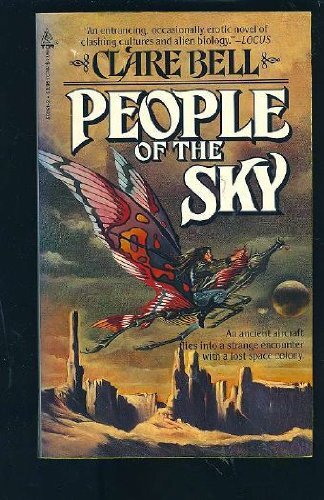
This amazing novel features 1) humans riding intelligent telepathic alien dragonflies, 2) a hidden village of Pueblo Indians on another planet, 3) a restored WWII Gooney Bird aircraft, 4) ( spoiler! ), 5) ( spoiler! )
Kesbe Temiya, a Pueblo Indian pilot from Earth, gets hired to go to another planet to fly a restored WWII Gooney Bird from the spaceport to the home of a wealthy collector of rare airplanes. She runs into bad weather and is rescued by a boy riding an aronan (a giant alien dragonfly), who leads her to his hidden colony of Pueblo Indian dragonfly riders, the Pai. They are unknown to the rest of the population of the planet because they want to live in peace and not be bothered. Kesbe realizes that they are the descendants of a supposedly lost expedition.
Because of damage to her plane, she's stuck with them for a while, long enough to get to know some of them and befriend Imiya, the boy who rescued her, and his beloved aronan. Kesbe is in a weird position with them, as she's the first outsider they've dealt with in ages, and while she's technically of their culture, there have been BIG divergences since they landed on the planet, and Kesbe never lived in any kind of traditional village when she was on Earth. The culture clashes are thoughtful and well-done.
Kesbe notices some strange things going on in the village. Only children and teenagers ride the aronans. Once the teenagers go through a ceremony and become adults, they never ride again and their aronans are never seen again. No one in the village will discuss this, and the young humans and aronans who haven't been through the ceremony are not told what it entails. Imiya is also worried about this, and afraid of losing his beloved aronan. Is something sinister happening beneath the surface of the seemingly pleasant community?
( spoiler! )
Super weird book but I liked it a lot. The plot is kind of rickety but the worldbuilding is great. If you like "people riding intelligent flying creatures" and anthropological SF, you will probably like this.
I read this batshit work of anthropological SF when it first came out in 1990, then unfortunately lost it. I am pleased to report that it is now available as an ebook.
 comments
comments
Published on April 02, 2024 12:18
March 29, 2024
I once again have a large backlog of unreviewed books
View Poll: #30981
ETA: Polls cannot be edited once posted, so you will need to comment if you want to hear about Looking Glass Sound by Catriona Ward, which is excellent but impossible to discuss without massive spoilers.
 comments
comments
ETA: Polls cannot be edited once posted, so you will need to comment if you want to hear about Looking Glass Sound by Catriona Ward, which is excellent but impossible to discuss without massive spoilers.
 comments
comments
Published on March 29, 2024 17:17

 comments
comments


